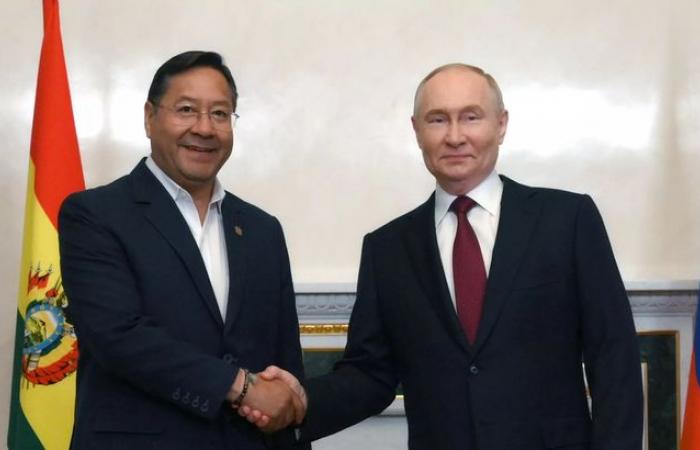diana mondino in china 1.jpeg
Foreign Minister Mondino on her trip to China.
Data that was published in The Economist: Annual trade in goods between China and Latin America increased to $445 billion in 2021, compared to $12 billion in 2000.
Between 2005 and 2021, Chinese state banks lent $139 billion to Latin American governments. It has invested billions of dollars in the region, mainly in energy and mining. Some 21 countries in Latin America and the Caribbean have signed on to China’s Belt and Road Initiative, a massive wave of global infrastructure construction.
In 2022, The yuan overtook the euro to become the second most important foreign currency in Brazil’s central bank vaults.
In April 2023, a Chinese state-owned power company reached a deal to buy two energy suppliers in Peru, which would give China a near monopoly over the country’s energy grid.
China has boosted engagement with law enforcement agencies. It has trained police forces in countries such as Argentina and Brazil, donated cars and investigation equipment to Nicaragua and Costa Rica, and sold surveillance equipment to Ecuador.
Since 2017, five countries in the region have abandoned their ties with Taiwan in favor of China. In March, President Xiomara Castro of Honduras was the latest to do so. In the last decade, China has allocated billions in infrastructure projects, especially in countries in Latin America, Asia and Africa. The New Silk Road has built roads, train lines and ports and increased Beijing’s influence in more than 140 countries.
This strong investment from the Asian giant marked a challenge not only in terms of grains but also in terms of infrastructure and the financial system to carry out each commercial transaction that, for the most part, is carried out maritimely. In the case of Latin America, China has invested between 2003 and 2022 a total of 187.5 billion dollars in sectors such as telecommunications, Fintech and energy transition, which are strategic for China.. Electric cars in Brazil, lithium companies such as Tianqui Lithium in Chile, Huawei expanded in the region in data centers. Cloud computing and 5G technology. The main recipients of FDI, 42% – almost 78.6 billion dollars – of the total went to Brazil in first place, then Peru, followed by Mexico, Argentina and Chile.
In the case of the US, which is also betting on renewable energies and, in particular, wind and solar energy, they are the driving force of its strategy. The law creates a package of more than 60 billion dollars whose objective is for manufacturing activities in the renewable energy and transportation value chains to be installed in the United States. In particular, The following additional financing is expected to be granted (ECLAC2023):
- $30 billion in tax credits for the production of solar panels, wind turbines, batteries and critical mineral processing;
- 10 billion dollars for the construction of manufacturing plants;
- $500 million for critical mineral processing and heat pumps (funding provided in the Defense Production Act);
- $2 billion in subsidies to remodel automotive manufacturing plants to produce electric vehicles and ensure worker continuity;
- $2 billion for national research and development laboratories to accelerate research in energy technologies.
Recently The Biden government imposed a 100% tariff on imported electric cars when it was 25%. If we add that China stopped buying grains, as it usually does from the US, and began to supply wheat, corn and soybeans from Brazil, Argentina, France or Australia, a race began to secure inputs for industrial and technological development. as well as food products.
Although ECLAC publishes investment announcement data by country in the region, this ranking is headed by the United States, followed by Australia in second place, Germany third and China fourth. The difference between countries is their capacity for concreteness. A good development of its banking systems, swaps between central banks, acquired companies, in all of this China has been taking advantage over the rest of the countries that sometimes they only remain an advertisement. A specific case is about the Lithium product, but the US understands it as strategic.
Given Argentina’s refusal to join the BRICS, other countries in the region choose to distance themselves or counterbalance the influence of the White House and its AMCHAM (North American Chamber of Commerce). Among them is Nicaragua and Bolivia.
It is known that the lithium triangle is located in northern Argentina, southern Bolivia and northern Chile. These lithium reserves are the largest in the world. Bolivia would be taking advantage of the vacancy left by the Argentine government chaired today by Javier Milei. The BRICS account for 35% of world trade. The association with Nicaragua and Bolivia would allow both countries to access the technology necessary to continue their industrial developments.
The question underlying these advances and exchanges is whetherWill the Free Trade Agreements between China and Nicaragua lead to greater commercial, technological and financial dependence? Ecuador signed a free trade agreement in 2023. Will it be similar to the FTAA? Do these types of agreements need to proliferate? But the reality is that many countries have not had good results following the recipes of different international organizations coordinated by the White House.
Vladimir Putin Luis Arce.webp
Luis Arce with Vladimir Putin.
Photo: Sputnik Agency.
In the case of Nicaragua, a maritime connection is opened for commercial exchange between the ports of Tianjin and Puerto Corinto, which will allow another route through the Pacific that China has been tracing with different countries in the region. In the economic aspect, China’s exports to Nicaragua have increased 178% per year, from 6.3 million dollars in 2017 to 1,000 million dollars in 2022. That same year, Nicaragua exported 25.3 million dollars to China. The need for the countries of the Caribbean and South America is to be able to develop their economies; today the workshop of the world is China.
In this sense, the BRICS is not only a political space, but it brings together the main countries with the lands most suitable for food, as confirmed by the FAO. China and Russia are the main economies with land suitable for producing food, an advantage they have with the rest of the Western economies. In fourth place, there is Argentina. The BRICS include a population of 3.5 billion people, representing 45% of the world’s inhabitants. In addition to the founding countries, Saudi Arabia, Egypt, the United Arab Emirates, Ethiopia and Iran recently joined. In addition to Bolivia, Cuba, Venezuela, Algeria, Senegal, Turkey, Kazakhstan, Bahrain, Belarus, Burma, Thailand and Bangladesh requested entry.
According to the Minister of Foreign Affairs of Russia, Sergei Lavrov, in the coming months efforts will be made to resolve these requests given the need to begin, not only to de-dollarize the economies of the region, but to take the first steps towards a new financial architecture. of the BRICS that would begin in 2025. China and Russia have it as a priority.
Recently BRICS multilateral space push to create a grain exchange, which will balance a bit globally given the restrictions that are being imposed on one of China’s main partners, Russia. In 2023, the bloc’s member countries (Brazil, Russia, India, China and South Africa) accounted for about 42% of global production and 40% of cereal consumption, according to the Russian Ministry of Agriculture.
For Latin American countries it means not only having the challenge of developing their economies but also removing influence from the trade policies of the US and the EU. China and Russia today accompany emerging economies in commercial, financial and technological exchange. Latin America, as in other times, was known as the land of cocoa, bananas, wheat, meat, gold, silver, coffee and rubber. Will the countries be able to solve their historical problems with this association with the BRICS? Today, Argentina’s non-financial private sector maintains an obligation abroad, mainly with the United States, 18 billion dollars, but China has doubled its position from 2017 to 2023, almost 6 billion dollars. Both countries represent 25% of the external obligations of the Argentine private sector.
Argentina is on the path of political repression, locking up protesters for “sedition.” According to the latest social employment data, some 86,000 jobs in the private sector were destroyed in this first quarter of Milei’s government. Leaving companies up for auction. An inflation that went from 289% (Apr24) to 276% (May24) but with a first quarter of GDP falling by 7%, which we anticipate here. Destruction of production and employment. Is free trade in this context the solution?







